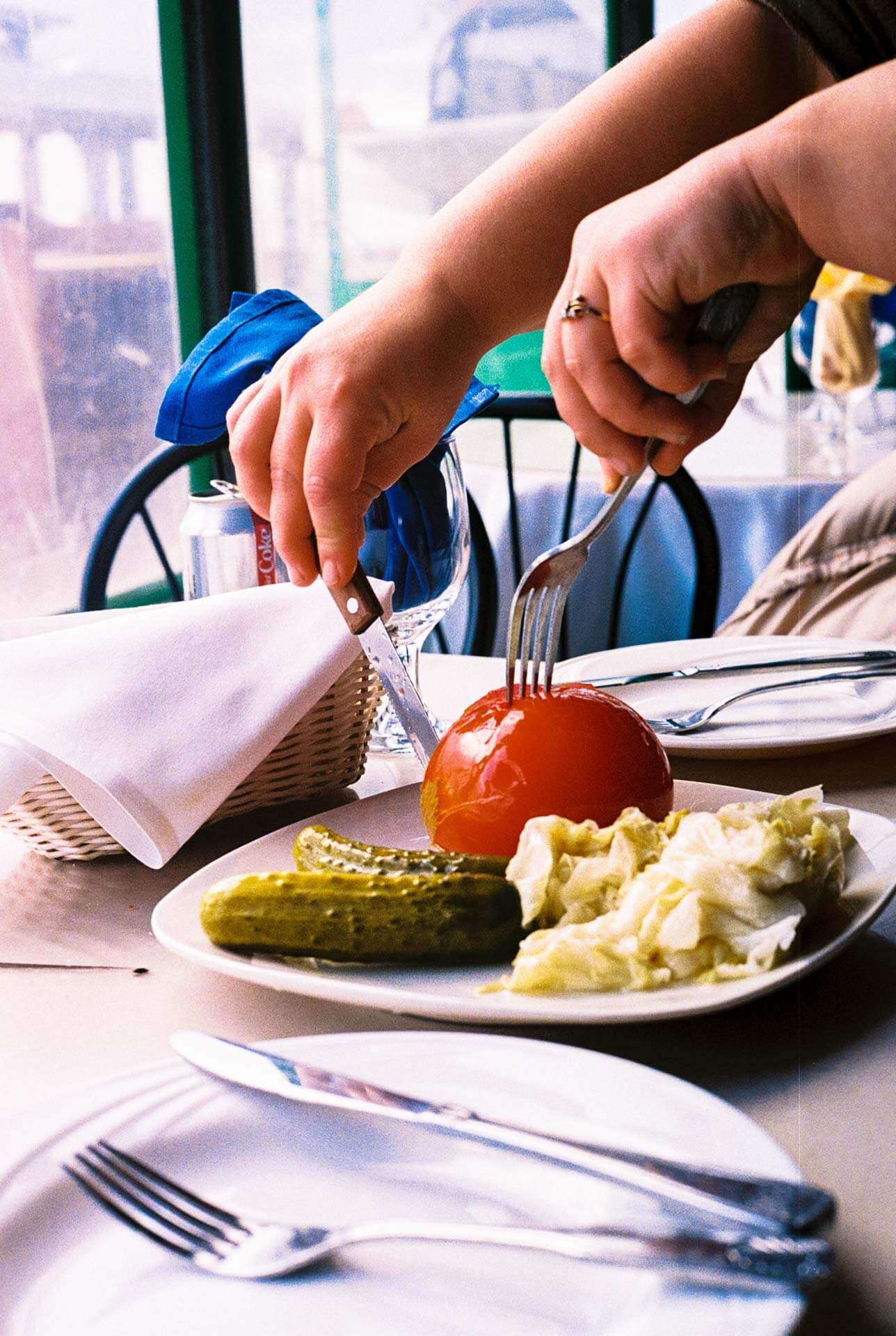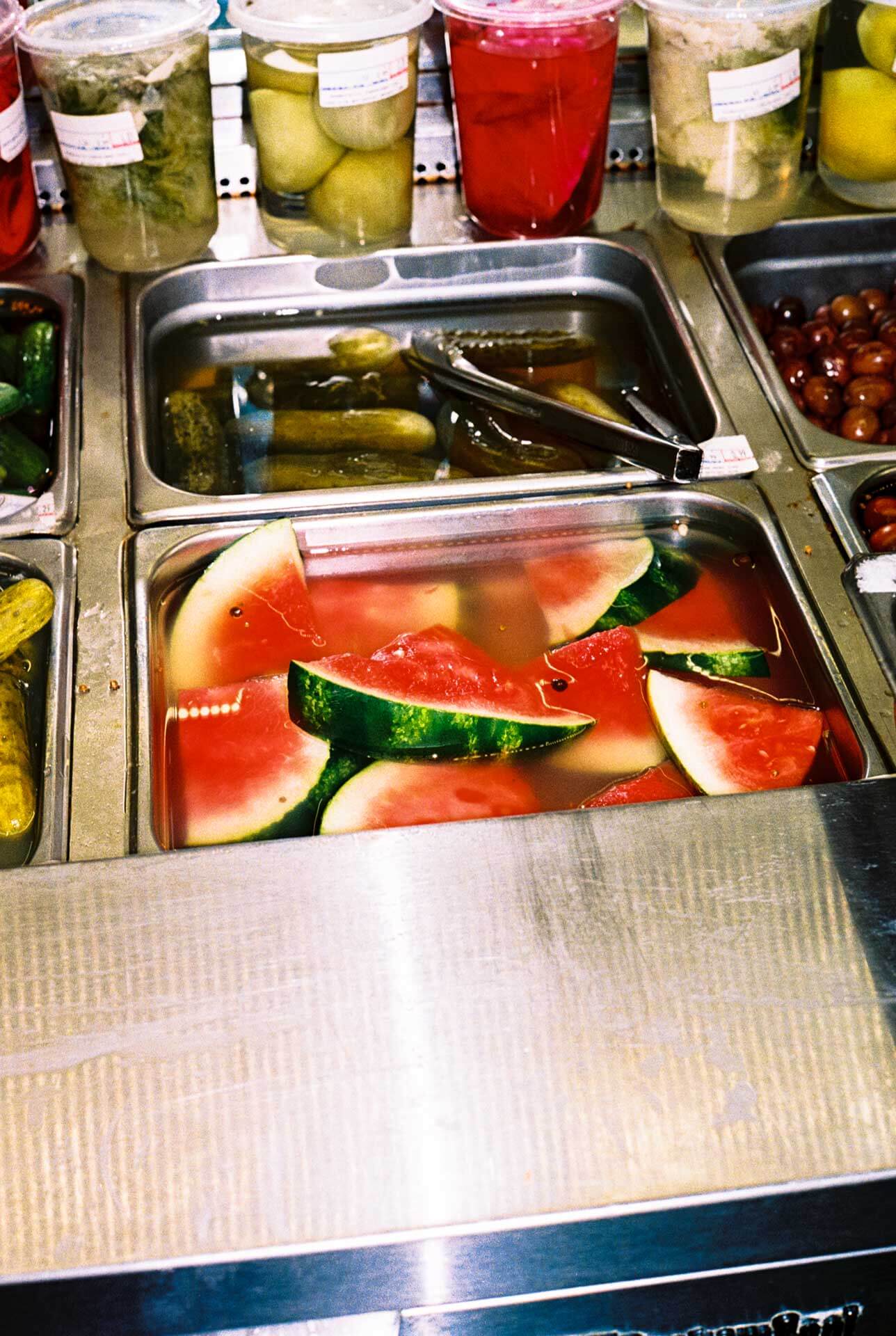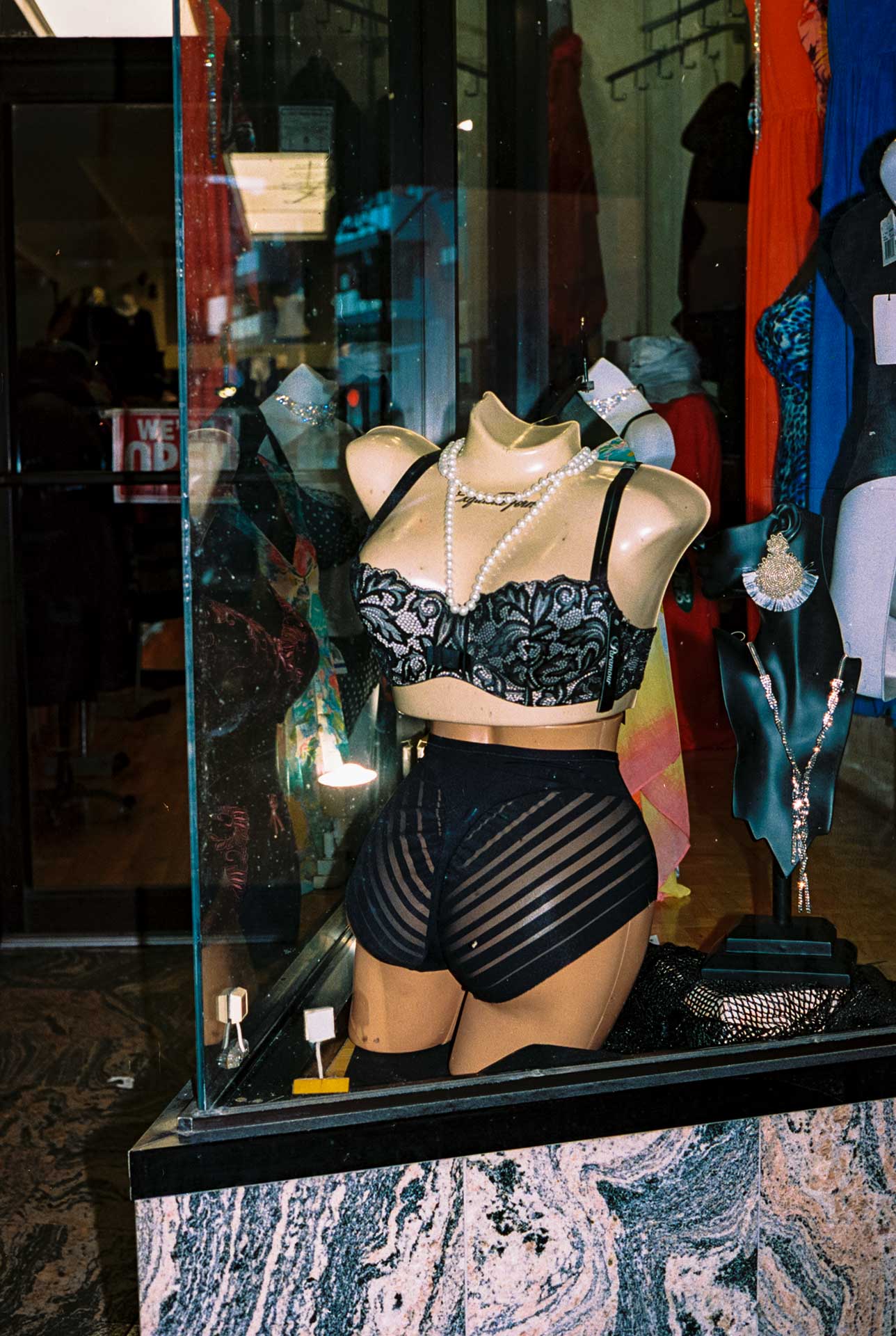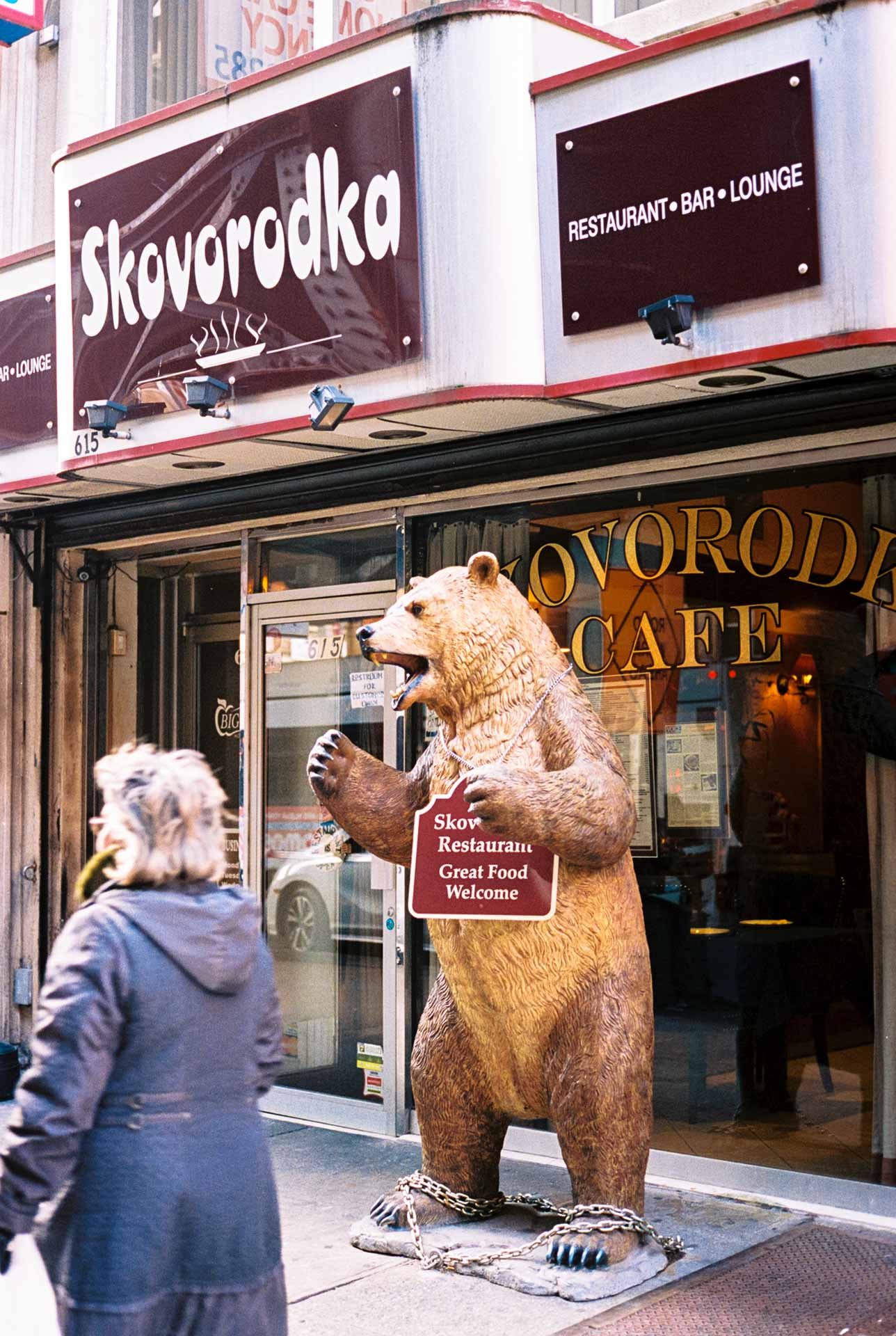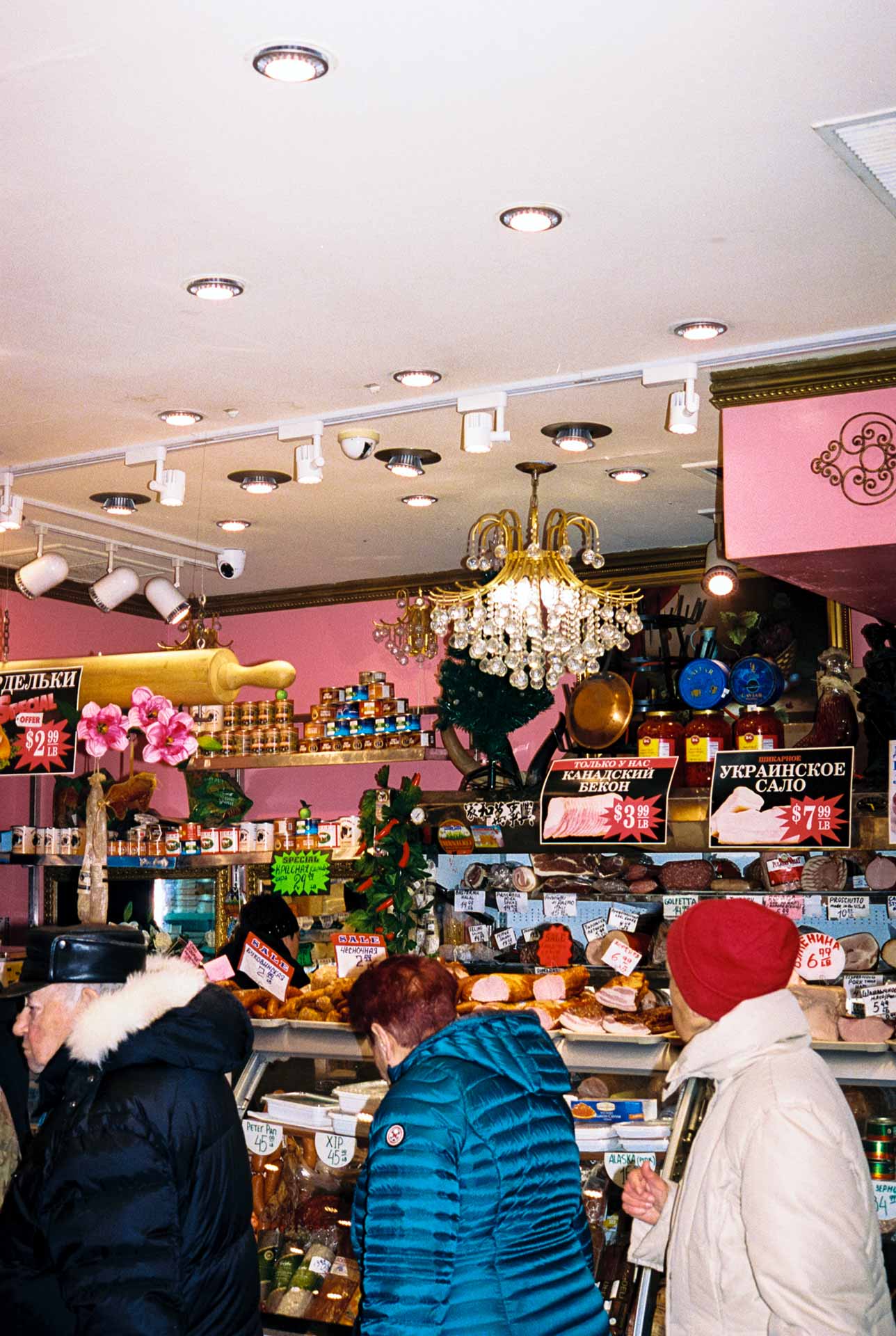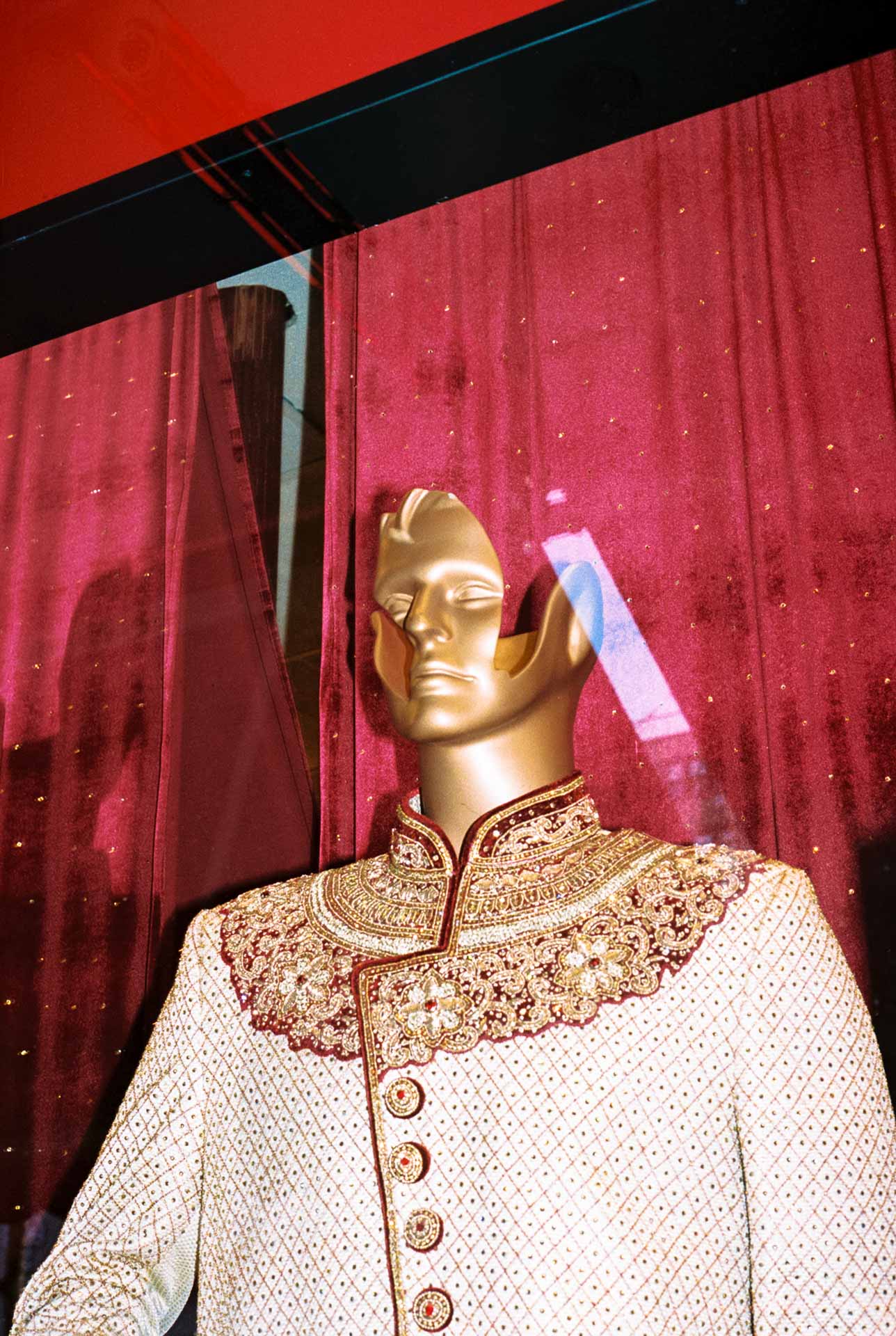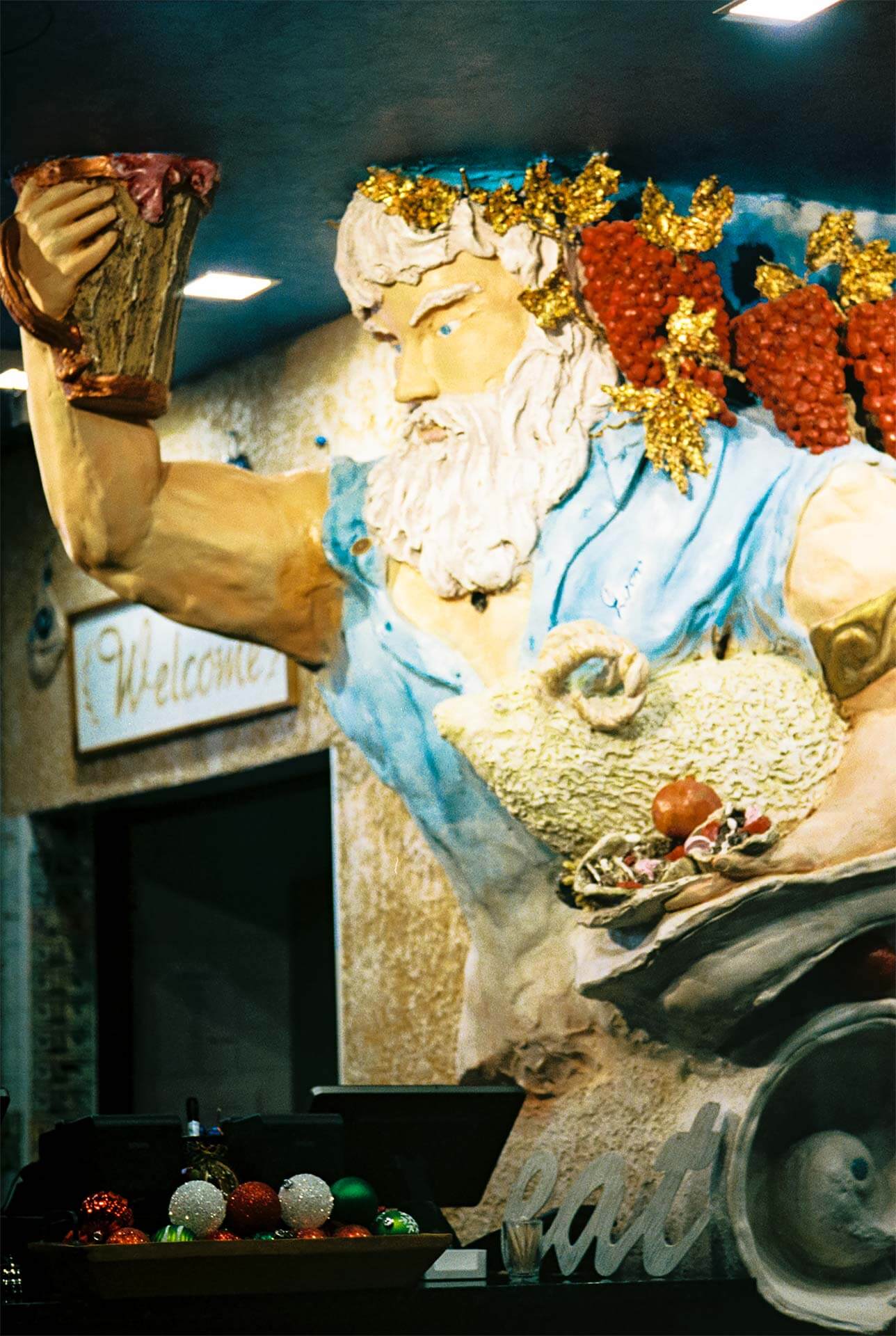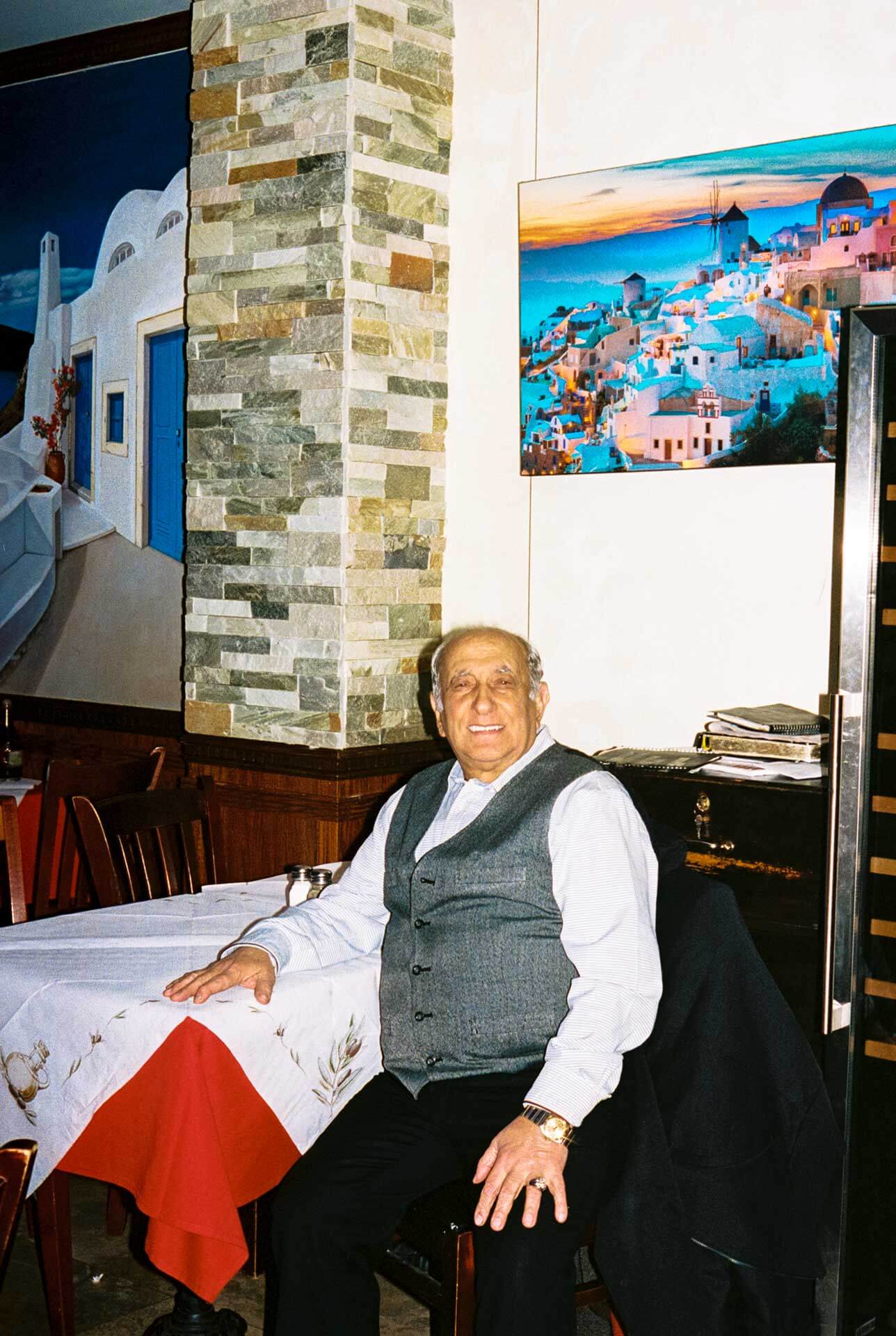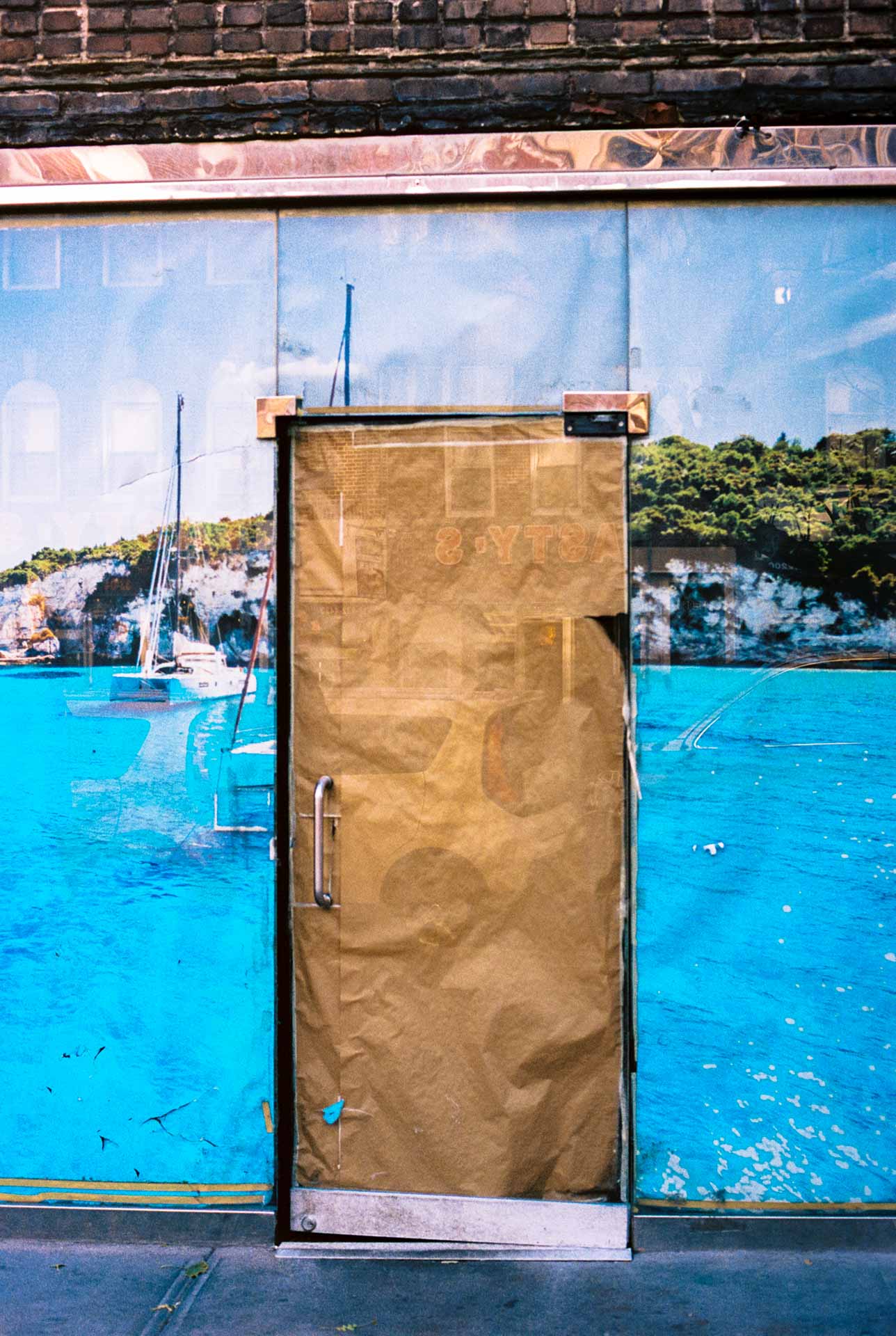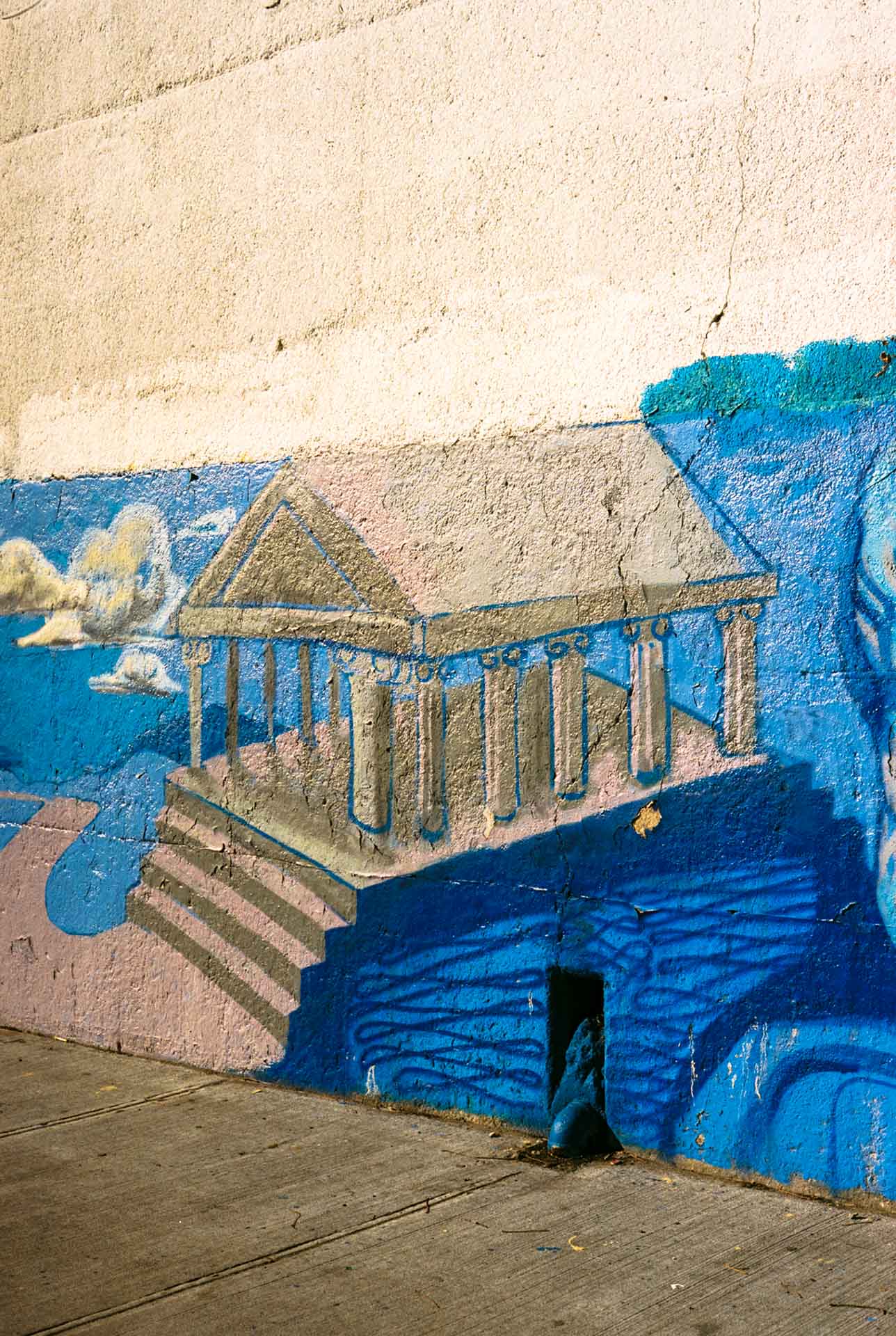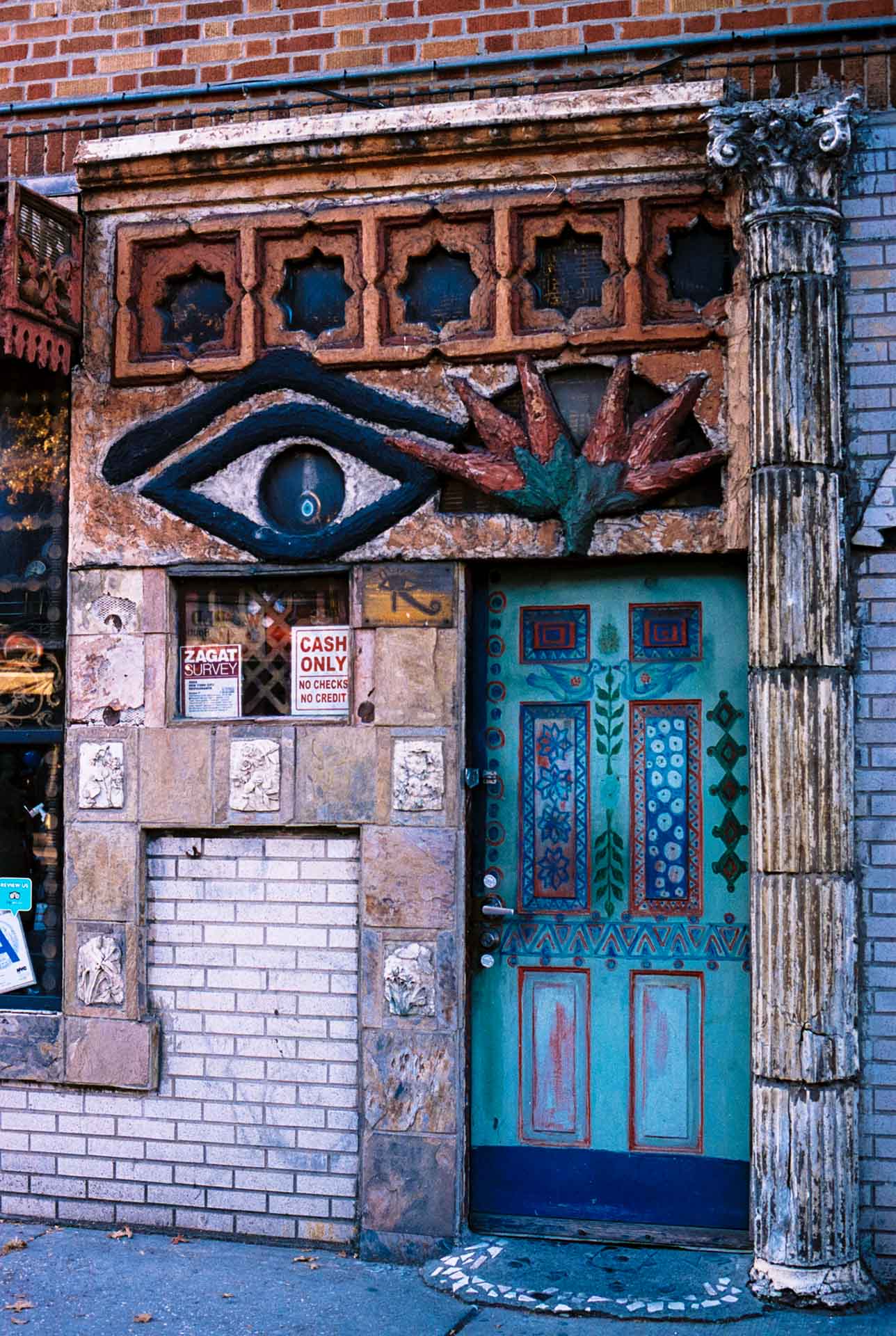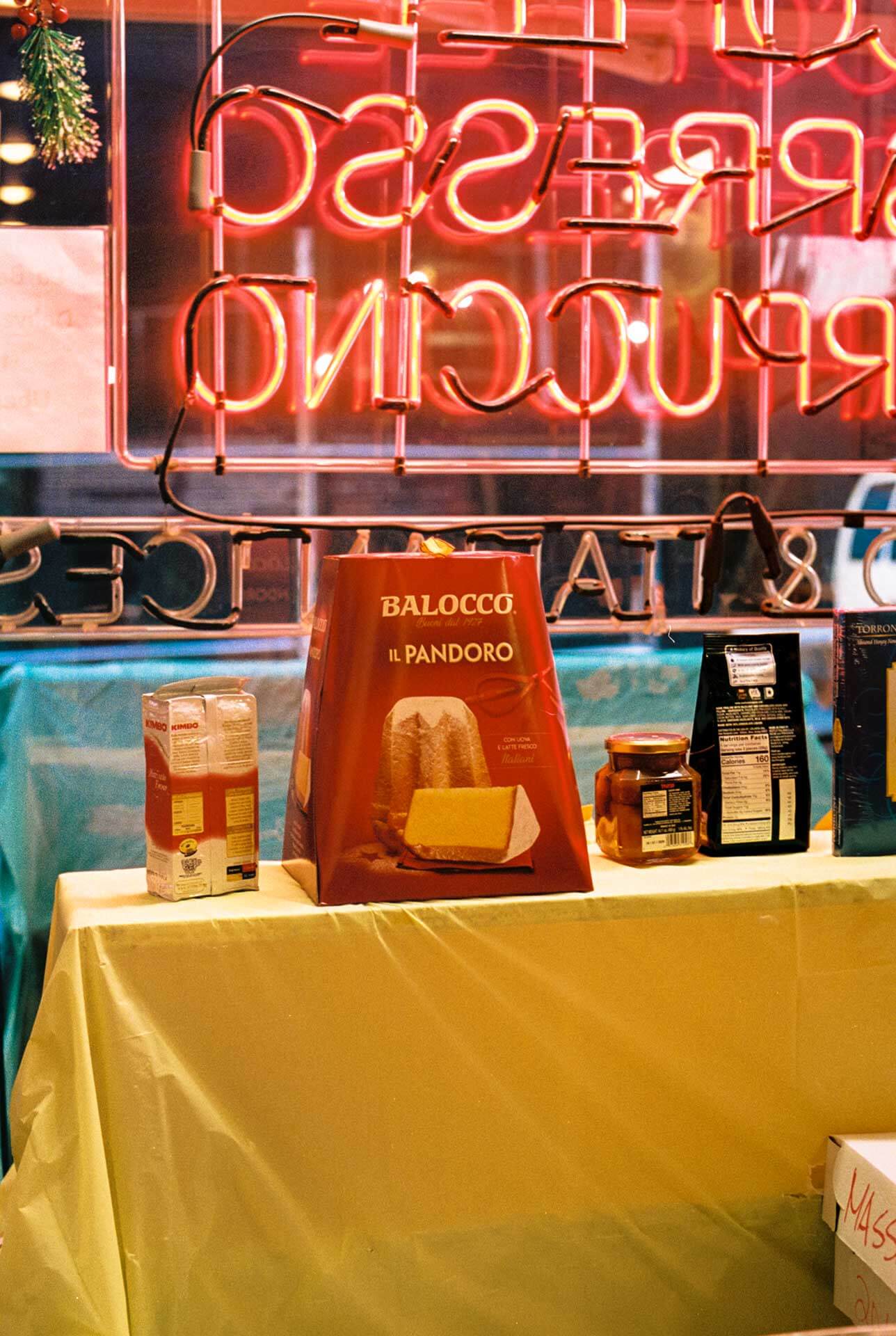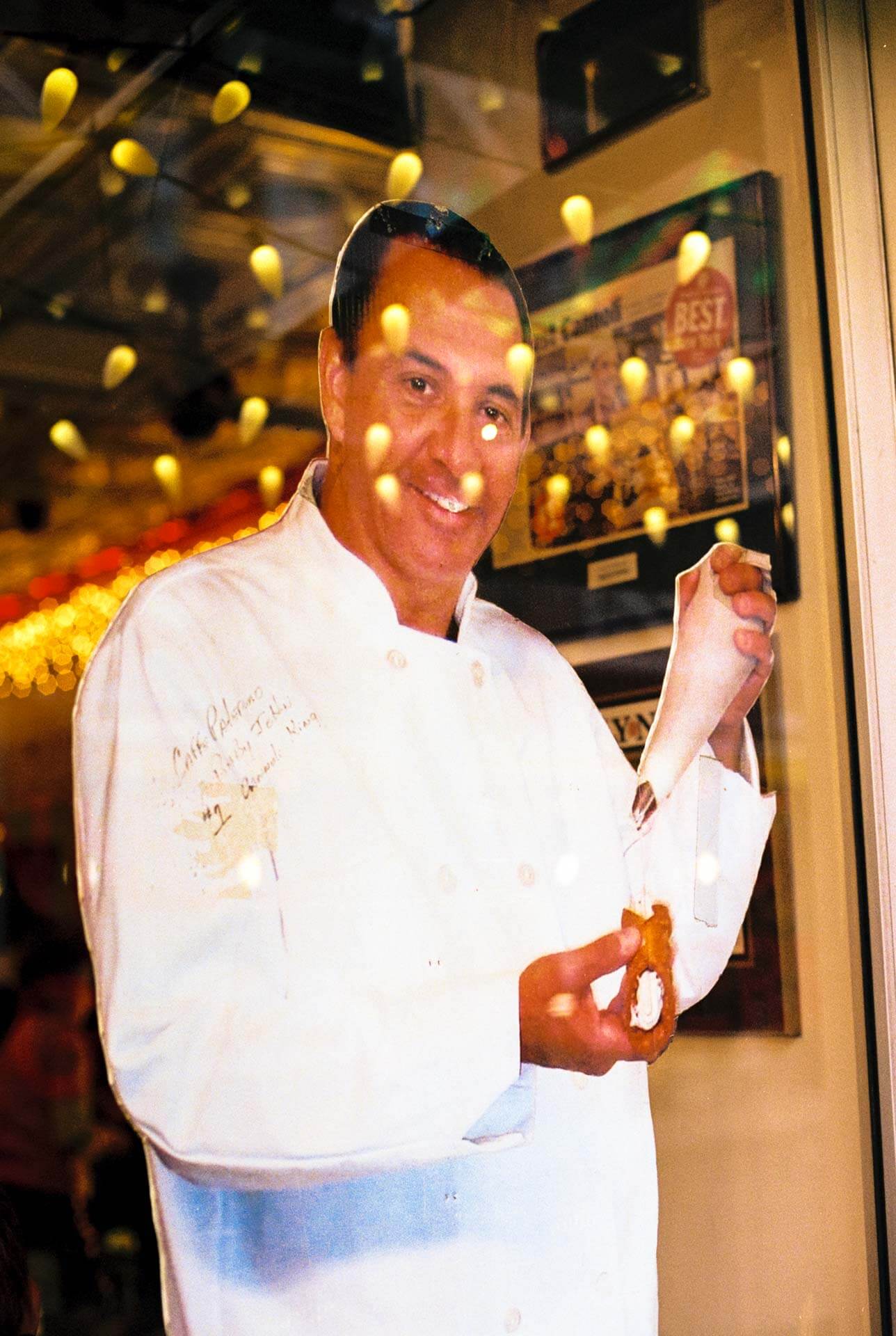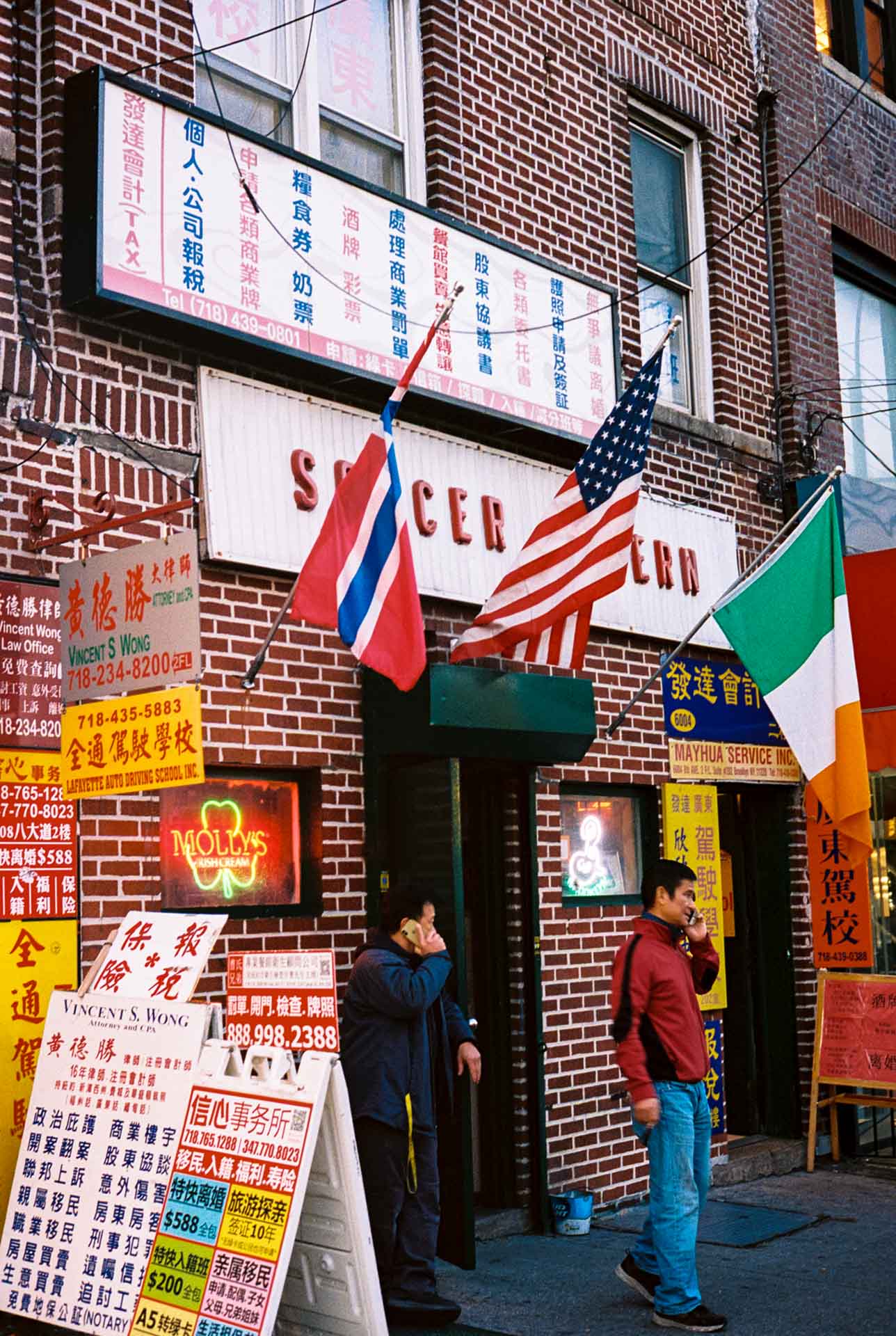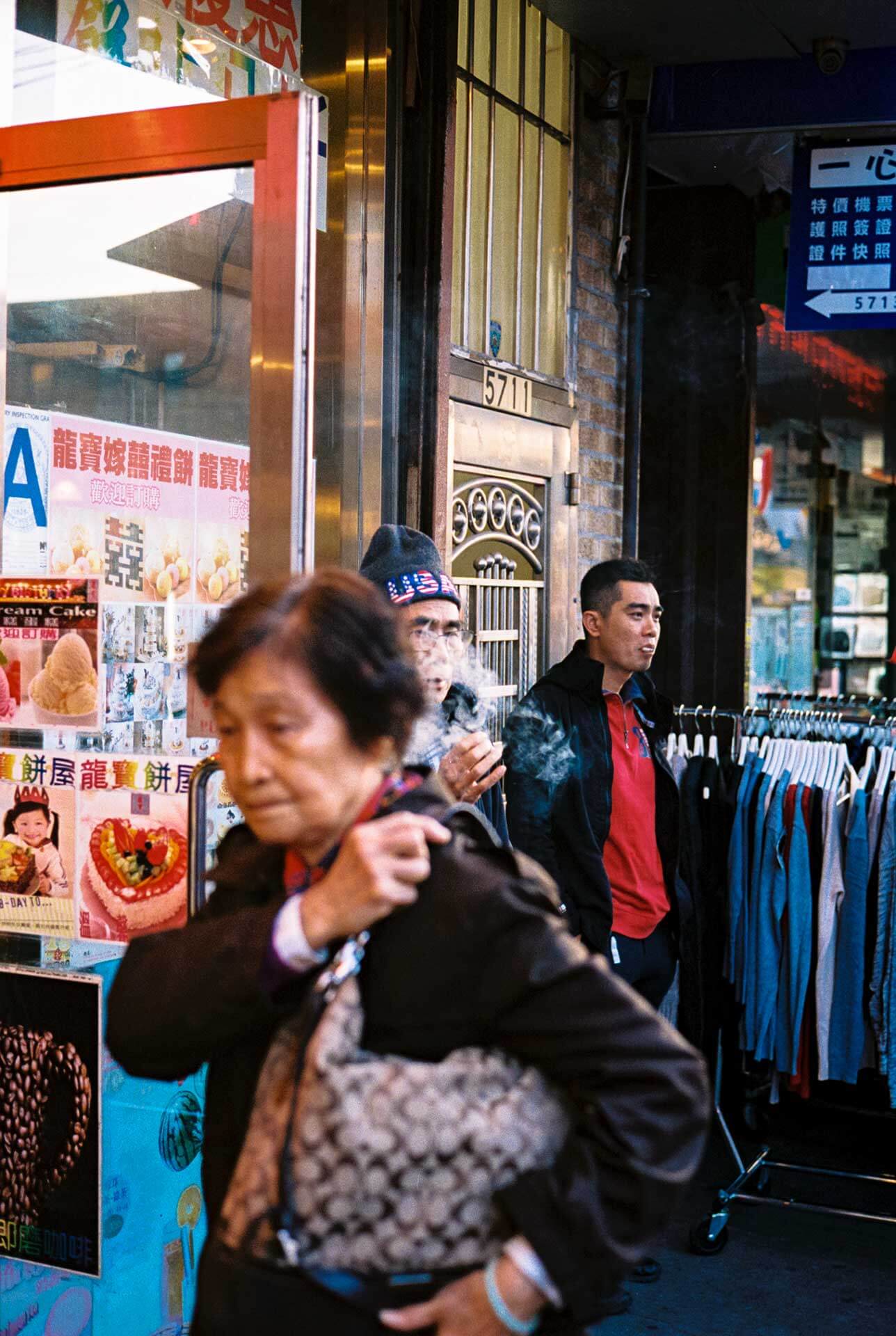There’s a big Russian grocery store on the edge of Brighton Beach, deep in Brooklyn, off the Q train, near the water. The store is housed in an old theater from around the 1930s, one with a 20-foot walkup, the kind you see at a movie premiere or in a movie depiction of a typical Broadway show. There aren’t any lights in this store, though there is a row of chairs outside, and when we went in December, each chair was full, and the wall was lined with Russians in their 50s and 60s, sititng down, watching the foot traffic on a -10° C day. In Brighton Beach the movie theater grocery store is just one of many. There are a bunch in the neighborhood. This one’s stock is half food found in a regular big American chain grocery store and half Russian specialties. They are mixed in together. You can get caviar by the Monster Energy drink, apples near the dill, Greek yogurt by the Cyrillic ones. It’s bigger and more ostentatious than most grocery options in Brighton, and other neighborhoods in Brooklyn and Queens, the ones that make up this photoset.
Since forever, there have been two types of New York, but the demarcation depends who you ask and what time of day it is. Who decides how to break the city apart? There are some obvious ways to. Splitting Manhattan from everything else is the truest distinction, though less useful the past two decades. Divvying up the city between Brooklyn and everywhere else is a modern way to make a distinction, though it is less useful than the abovementioned. It ignores so much, and Brooklyn is very, very big. A third split is between the city’s commuter area and past that – the “one-transfer zone” where only one bus or train route gets to an office or place of business in Manhattan or Downtown Brooklyn, where so many people work. There are non-geographical ways to divide the city up: natives and non-, people new to the city and people not, people here for good and people stopping in. The more time I’ve spent in these neighborhoods I’m not sure these distinctions exist.
Adrianna, who took the photographs here, grew up in Manhattan and Brooklyn, and has spent the past decade living mostly abroad, in Italy mostly, then in France and Greece. Astoria, where so many of these photos are drawn from, was an obvious first step for her for this project. “I was always interested in Greece,” she says. “Moving back to New York after being in other cities for 10 years, I feel like neighborhoods like this only exist on this level in New York. Astoria was similar to Greece, with supermarkets where you can get everything you can dream of, Greek spoken on the street, and signs on the streets. Growing up in New York, you don’t appreciate it, because it’s a normal thing. But coming back it’s insane that it exists on this big level.”
New York, of course, is massive, with 8.5 million inhabitants and about 2.5 million each in Brooklyn and Queens. Communities grow and persist in different neighborhoods and change over time. Brighton Beach is the largest Russian community in America, and many Russians also live in Gravesend, Sheepshead Bay, and Midwood. Sunset Park, not far off, has Brooklyn’s big Chinatown, and that community reaches out into Dyker Heights, Bensonhurst and Bath Beach. (There are three Chinatowns in Brooklyn, three in Queens and one in Manhattan.) Jackson Heights, which was a large LGBTQ community, with artists from the theater district moving in, and a big Jewish population, changed in the 1960s to welcome more Latino and South Asian immigrants, many middle class, many with families. One language lives next to another in this neighborhood. Woodside, Queens, which is nearby, was very Irish and has since turned Chinese. You can get a good burger at Donovan’s, which is a city block long. It’s a sensory overload to walk down Roosevelt Boulevard. Signs change from English to Spanish to Urdu to Hindi to Russian, sometimes all in one block, sometimes next to each other. All the businesses seem small, and the chains seem small somehow, too.
When Adrianna and I went, this fall, all over, we got chased out of grocery stores in Brighton and welcomed into bars and social clubs, split cheap dinner next to Tibetan monks and played ping pong, or tried to to, against Hasids. We both live in New York full time, and hang out in different neighborhoods than the ones we visited, so we traveled, but not far. It was only one transfer but it’s different. Lots of our interactions were purely aesthetic, walking down streets not different than the ones we live on, stopping dead in our tracks at the architecture or signs or some of the outfits. Because this is New York, almost no one noticed us. How different is it? Not worlds apart: the chain stores and architecture and weather is the same, so are the trains. The signs all look different, with graphics either 10 or 30 years old, using much more direct language than most of the ones by us: Panther Personal Trainer, Wealthy Laundromat, Mega Dream bodega. “It’s me finding random details in the neighborhood, finding the things that you see all over the world,” says Glaviano, but different. A world turned on its ear and different, skewing younger and older – though it might be us that’s skewed.
There is a lot in Queens that you can’t track down anywhere else in the city. There’s the butter tea at Lhasa Fast Food on 74th Street, between 37th Ave and 37th Street (bring a map), which is in the back of a cell phone store on a block full of cell phone stores in Jackson Heights. The tea is for sherpas to drink on the way up mountains, and stay full all morning. Near that is Sona Chaandi, a jewelry store on a block of mostly Indian jewelry stores there. It is breathtaking to look at. Not far off from Lhasa there’s a butcher shop in the back of a cell phone shop. A bit of a walk down in Jackson Heights finds Zapateria Mexico, on Roosevelt, a Western supply store with snakeskin boots and the embellished Western shirts, big belts and Wranglers (cowboy cut) behind the counter and a wall of belts the width of most stores elsewhere. That store is right near Tacos Veloz, which might be the best in the neighborhood.
When you get off the train in Brighton Beach it smells like dill, and turning around there’s a Hare Krishna temple on Brighton Beach Avenue and, I think, Brighton 4th, and near that a stand with meat and cheese pies, and sweet ones, for a couple of bucks. There’s the movie theater grocery store and another, Brighton Bazaar, on the corner of Brighton Beach and Coney Island Aves, that skews even more cyrillic, and close to the temple there’s Volna, right on the water, with the best shrimp cocktail in New York, which you can drink in a seating area protected by a thin plastic door, unless you’re Russian, or have a northern temperament. It is cold there unless it’s spring or summer. There’s Oktoberfest, which is on the way to Volna, and gives you draft beer in a clear plastic bottle to go, and vodka from kalashnikov bottles is available at the liquor stores nearby. Both are drinkable, but only the vodka makes a good gift. Driving up Coney Island Ave, there’s Tsar Caviar, a store that lives up to its name, with a heavy selection of fish eggs. Up the block, closer to Kensington, is a ping pong gym, the Brooklyn Table Tennis Club. It’s in the bottom of a parking garage, and there’s a carpeted path between the cars. It’s always full, and has photos of tigers on the wall, and more tigers in the bathroom.
The danger visiting New York is that you might stick to the same recommended neighborhoods, the same bars, the same tourist spots, the same emerging little restaurants and places to visit on a trip and not really see the city. To be sure, places that come highly recommended and that are close to the city are in the mix, and fun to go to, and usually pretty good. They’re worth going to. There’s not a lot better than running into people you know at a bar halfway across the world. These kinds of things make the world a smaller place, which is nice, and reassuring. And it is your vacation, so you should do what you want.
But there’s a lot to get out of changing it up, going to a neighborhood you might not usually go to, and exploring. There’s a danger in invading a neighborhood, being an interloper, colonizing it. I’m not sure I’ve figured out the right way to do it yet. But it’s not a charity mission: it’s about respect. These are fun places to go to, and they’re as New York as the Statue of Liberty, Rockefeller Center, or Peter Luger’s. That’s the point: there really is no difference.
